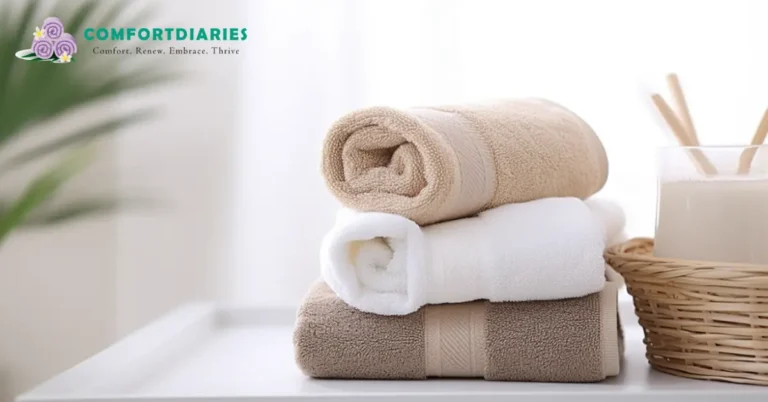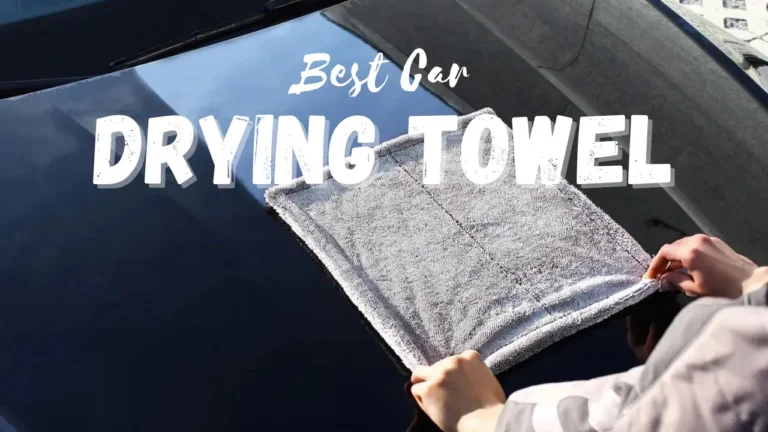The Science Behind Absorbent Gym Towels

For gym enthusiasts, a high-quality towel is an indispensable part of their workout gear. These absorbent pieces do not just wipe away the sweat. They are essential for comfort and hygiene fostering a smooth workout experience. At first glance, a gym towel might look like any other piece of cloth but beneath the surface, a complex web of materials and technologies defines just how efficient it is at its job. Absorbent Gym Towels help us to improve our workout with their sweat absorbing qualities.
This comprehensive look at gym towels aims to unravel the science behind the absorbency these essential items offer. By delving into the fabrics and technologies that compose them, we uncover how these factors directly impact the performance of a seemingly simple piece of fabric.
Why Absorbency Matters
In the context of gym towels, absorbency is everything. Whether you are a marathon runner logging in miles on the treadmill, a weightlifter pushing personal bests or simply someone looking to stay healthy and active. A sweat-soaked workout is a badge of honour. However, dealing with moisture effectively is vital not only for personal comfort and hygiene but also for the maintenance of fitness equipment and general safety in shared training spaces.
The Soaking Science
The wetter a gym towel gets, the more sweat and moisture it can absorb. And the faster it dries, the quicker you can enjoy the benefits of a fresh and clean towel. This means the towel plays a direct role in both wicking away sweat during exercise and drying off your skin afterwards. A towel with low absorbency is like a slow comrade during a fast-paced workout.
Performance and Comfort
Surpassing the aesthetics of a colorful or logo-stamped towel, true performance lies in its absorbent capabilities. An absorbent towel is not only more effective at wicking away moisture but also more comfortable against the skin. As it leaves no slippery residue of moisture that can persist with less absorbent alternatives.
Environmental and Economic Benefits
An absorbent towel saves water. The more moisture it holds the less need for repeat washes. A win-win for the environment and your utility bill.
Understanding Fabric Technology
The science of absorbency begins with fabric technology. The choice of material can make a huge difference in how well a gym towel absorbs sweat and moisture.
Fabric Types in Focus
Cotton is the classic gym towel fabric due to its natural absorbency and softness, but it is not the only contender. Synthetic materials like polyester and blends with microfiber are rapidly gaining popularity for their high performance.
The Impact of Fabric Composition
The composition of the fabric or what it is made of, determines its feel, absorbency and durability. A cotton-polyester blend, for example, might offer a balance between the natural absorbency of cotton and the durability of polyester.
The Role of Material
Material or the actual substance of the towel, is the heart of the absorbency conversation. Here is where we examine what makes specific fabrics superior in sucking up moisture.
Cotton Champion
Cotton is king when it comes to natural absorbency thanks to the unique structure of its fibres which are porous and can hold a considerable amount of water.
Polyester Power
Polyester while not naturally absorbent like cotton can be engineered to repel water making it a key ingredient in effective moisture-wicking blends.
High-Tech Hybrids
Blends like cotton-polyester or microfiber and spandex create materials with specific combinations of traits that make them ideal for fitness-related use.
Thickness and Quality
Gym towels come in various thicknesses and this thickness impacts the absorbency. A thicker towel generally holds more moisture but the quality of the fabric and weave are equally important.
A Tale of Two Weaves
The terry weave with its loops that can soak up water is the most common for towels. While a tighter weave will offer less absorbency but more durability.
Thread Count Truths
Higher thread counts are often equated with higher quality but in the context of absorbency, it is essential to consider not just the quantity of threads but the quality and thickness of those threads.
The Role of Microfiber
Microfiber is a synthetic material made of extremely fine threads of polyester and polyamide. While it may not have the natural absorbency of cotton, it more than makes up for it in other ways.
The Magic of Microfiber
Its tiny fibres create a densely packed weave structure, increasing the surface area and enhancing its ability to absorb moisture many times its weight.
Microfiber Advantages
Microfiber gym towels tend to be more lightweight, compact and quick to dry. Furthermore, the densely woven fabric resists the build-up of bacteria and odours.
Testing and Quality Control
Ensuring a gym towel is absorbent is a matter of science which is why quality control is essential for manufacturers.
Absorbency Testing
Towels are subjected to testing to measure their absorbency often in grams of water absorbed per square meter of fabric.
Factors Affecting Absorbency
Beyond material and weave, factors like the condition of the towel, any treatments applied, and the environment it’s used can affect its overall absorbency.
Choosing Quality
When picking out a towel look for indications that it’s been tested and certified for absorbency, indicating a commitment to quality.
Tips for Maximizing Absorbency
Even the most absorbent towels need a little care to maintain their peak performance.
Keep it Clean
Towels need to be washed to utilize their full absorbent potential. The build-up of sweat, oil and detergent residue can all degrade a towel’s absorbency over time.
Wash with Care
Use a mild detergent, avoid fabric softeners that can coat fibres and never use bleach which can break down fibres and reduce absorbency.
Prime Your Towel
A single pre-wash with white vinegar can remove any lingering manufacturing coatings and ensure your brand-new gym towel is ready to perform.
Conclusion
The gym towel is much more than just a workhorse of the fitness world. It is a complex tool designed for optimal performance in absorbing your post-workout sweat. By investing in high-quality towels that align with your workout needs, you prioritise comfort, efficiency and even environmental sustainability. As a faithful companion in your fitness journey a scientifically sound absorbent gym towel can make the difference between an ordinary routine and an extraordinary one.
Frequently Asked Questions (FAQs)
What is the best material for gym towels?
Cotton is highly recommended for natural absorbency whereas polyester or microfiber blends are ideal for quick-drying and lightweight towels that are efficient for regular workouts. Consider a cotton-polyester blend to take advantage of both material’s benefits.
How can I tell if a towel is absorbent?
Look for towels that specify their absorbency level, often measured in grams of water absorbed per square meter. Towels that undergo and pass absorbency testing are generally labelled and certified, indicating high absorbency.
How do I care for my gym towel to maintain its absorbency?
Wash your gym towel with a mild detergent and avoid using fabric softeners as they can coat the fibres and reduce absorbency. You can also prime your towel with a pre-wash using white vinegar to remove any residual manufacturing coatings..
Does towel thickness matter for absorbency?
Yes, thickness does play a role. Generally the thicker the towel, the more moisture it can hold. It is crucial to balance thickness with other factors like fabric type and weave for the best performance.
Why are microfiber gym towels recommended for fitness use?
Microfiber towels are valued for their incredible lightness, compact size and quick-drying properties. They have densely woven fibres that provide excellent moisture absorbency and they are also resistant to bacteria and odour buildup.
What are environmentally friendly options for gym towels?
Choose towels with higher natural fibre content such as organic cotton or opt for those requiring less frequent washing because of their high absorbency. Towels that dry quickly like those made of microfiber also contribute to saving energy.






